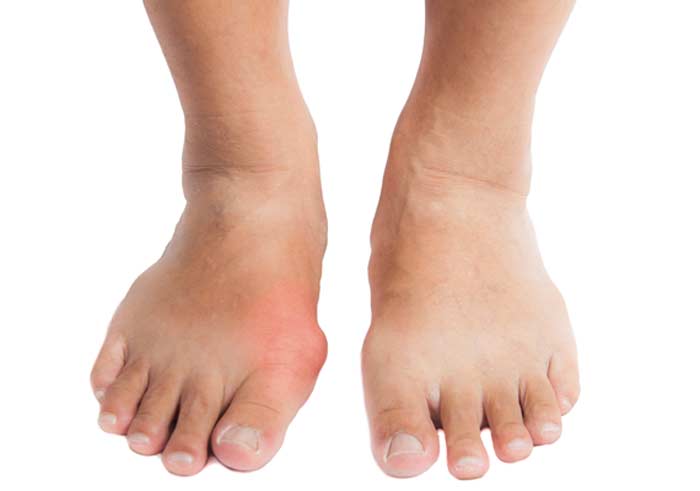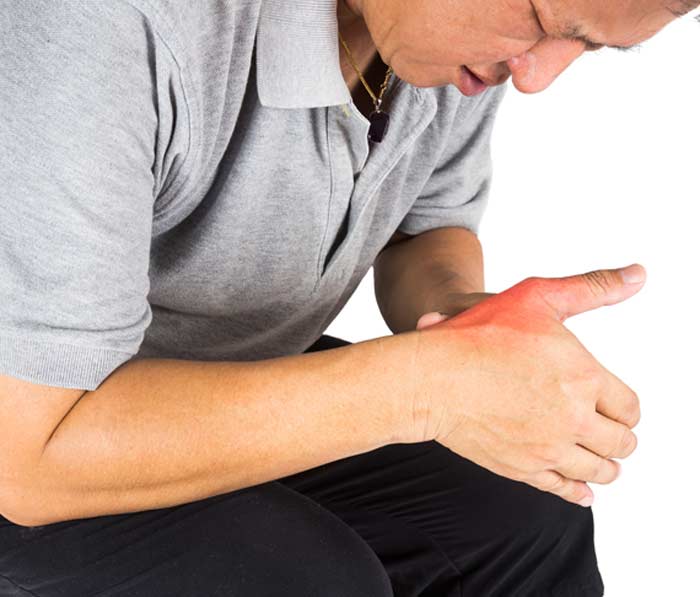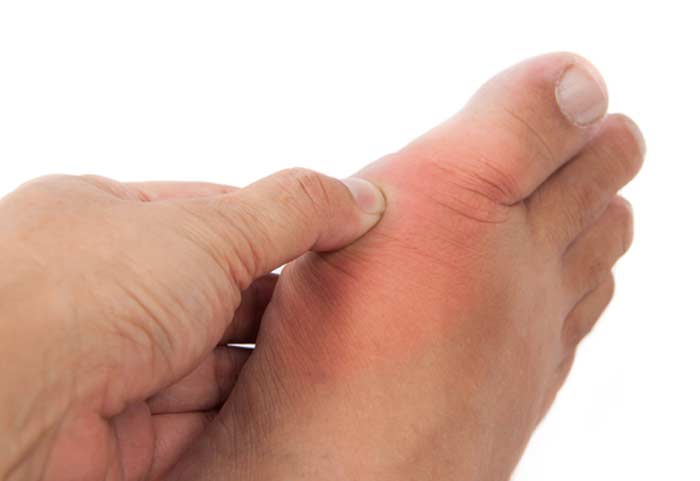
Gout-related pain is often experienced suddenly and usually during the night.
A type of inflammation-based arthritis, gout is caused by an accumulation of uric acid in the blood that crystallizes and affects joints. It’s different from other types of inflammatory arthritis in that symptoms are usually experienced as attacks of joint swelling, pain, or tenderness – usually around the base of the big toe.
However, gout is like other forms of arthritis in that it it’s not curable but still considered a condition that can be manageable for many sufferers.
What Are Common Symptoms?
The pattern with symptoms sometimes contributes to changes in sleep habits that may result in increased fatigue during the day and other problems associated with a lack of sufficient sleep. The sudden and sharp pain that’s characteristic of attacks sometimes occurs early in the morning instead of at night. Symptoms commonly associated with gout also include:
- Joint tenderness, swelling, or redness
- Stiffness in the larger joint of the big toe or surrounding areas
- Lingering joint discomfort that continues after severe pain subsides
- Reduced range of motion in the affected joint


How Does Uric Acid Cause Gout?
The accumulation of urate crystals in the blood is what causes gout. These crystals often form when levels of uric acid are high. When organic compounds called purines are broken down by the body, uric acid is produced. Certain foods contain purines as well, which boosts the level of uric acid in the blood that flows around joints. High levels of uric acid result in the formation of needle-like urate crystals, which triggers that joint inflammation that causes gout attacks. The risk of developing gout may also increase for individuals with chronic conditions such as diabetes or high blood pressure and those who are male and between the ages of 30 and 50, female and past menopause, or obese.
How Is Gout Diagnosed and Treated?
Because gout has symptoms that may be characteristic of other conditions that may affect the big toe joint, diagnosis usually involves a series of tests. A blood test can check levels of uric acid and creatinine. X-rays may be taken to rule out joint deformities and other issues, and a musculoskeletal ultrasound may be performed to detect urate crystals. While not considered routine, a dual energy CT scan is sometimes done to identify urate crystals in the affected joint and determine the level of inflammation. Treatment for gout may involve:
- Over-the-counter and prescription anti-inflammatory medications
- Colchicine, a pain reliever that’s often effective for gout management
- Oral or injectable corticosteroids
- Xanthine oxidase inhibitors and similar medications that block uric acid production
- Uricosurics that help the kidneys remove uric acid more effectively
- Losing weight and getting regular exercise
The risk of experiencing gout attacks may be reduced by making certain lifestyle changes specific to diet. Beer, for instance, contains a significant amount of the purines that are converted into uric acid by the body. So, avoiding excessive alcohol consumption may be helpful. Uric acid levels may also be lowered by making an effort to drink more water. Some gout sufferers also have less discomfort when using a cane or creating “gout-friendly” socks by cutting hole in the toe area of old or cheap socks.
